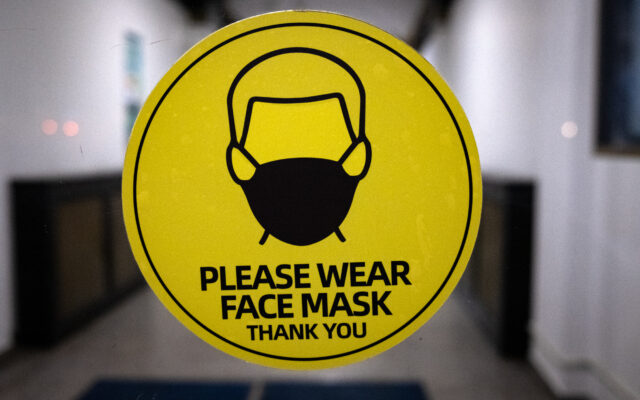
Maine doctors brace for surge in COVID-19 cases
By Kathleen O’Brien, Bangor Daily News Staff
Wastewater samples and the number of people hospitalized with COVID-19 suggest Maine may be in for another winter surge of the virus.
Wastewater from Piscataquis, Cumberland and Kennebec counties tested this month show the highest concentrations of COVID-19 since January, according to Biobot, which tests and analyzes wastewater for public health purposes.
Penobscot and Hancock County’s wastewater, meanwhile, has the highest levels of COVID-19 this month since October and December 2022, respectively, Biobot reported.
Wastewater testing is considered one of the most accurate markers of how prevalent COVID-19 is in the state because it accounts for people who test positive and recover at home.
The spike in COVID-19 cases is happening in tandem with a wave of other seasonal illnesses including Respiratory Syncytial Virus, or RSV, and influenza. This is leading to a surge in hospitalizations that taxes medical facilities that have historically struggled to find beds for everyone who needs care.
While cases and hospitalizations aren’t yet as high as they were this time last year, Dr. James Jarvis, senior physician executive for Northern Light Health’s COVID-19 response, said he remains concerned about the uptick, as it mimics what doctors saw last year.
Northern Light Eastern Maine Medical Center in Bangor is at or near capacity nearly every day, Jarvis said.
Statewide, 93 Mainers were hospitalized with COVID-19 as of Tuesday — the most since April 2023. Of those, 14 were in critical care and four are on a ventilator, according to the Maine Center for Disease Control and Prevention.
COVID-19 cases in Maine are likely rising due to several factors, such as people not receiving the most recent vaccine booster that guards against the JN.1 variant that’s gaining dominance.
The JN.1 variant appears to be more infectious than variants that circulated during the summer, but causes less severe illness, Jarvis said.
“We need to see more people getting vaccinated, particularly people who are over the age of 65
and who have underlying medical conditions that predispose them to getting more severe disease,†Jarvis said.
It’s common for Maine to see a wave of COVID-19 cases after other parts of the country see rising infection levels and spread the illness to the northeast, Jarvis said. This happens when people travel for the holiday season and when college students visit home during winter break.
“This is something we see every year with influenza, but now we have COVID-19 — yet another respiratory virus we need to worry about,†Jarvis said.
Though doctors aren’t yet certain whether COVID-19 cases will rise every winter, as RSV and flu cases typically do, Jarvis said they have seen cases in Maine rise over the last two winters and fall in the summer.
Jarvis recommends all Mainers receive the latest COVID-19 vaccine and new RSV vaccine to reduce the likelihood of contracting the illnesses, as well as wear a mask in crowded indoor settings or avoid them altogether.